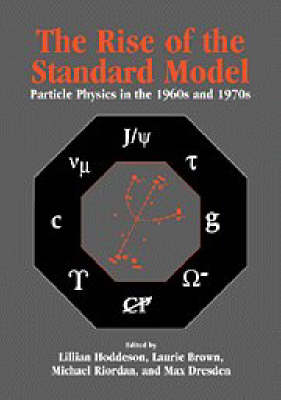
The Rise of the Standard Model
Cambridge University Press (Verlag)
978-0-521-57082-4 (ISBN)
- Titel z.Zt. nicht lieferbar
- Versandkostenfrei
- Auch auf Rechnung
- Artikel merken
Contributors; Editors' acknowledgements; Photographs of the symposium; Abbreviations and acronyms; Mathematical notation; Part I. Introduction: 1. The rise of the standard model: 1964–1979 Laurie M. Brown, Michael Riordan, Max Dresden, and Lillian Hoddeson; 2. Changing attitudes and the standard model Steven Weinberg; 3. Two previous standard models J. L. Heilbron; Part II. Quarks and Leptons: 4. From the psi to charmed mesons: three years with the SLAC-LBL detector at SPEAR Gerson Goldhaber; 5. The discovery of the tau lepton Martin Perl; 6. The discovery of the upsilon, bottom quark and B mesons Leon M. Lederman; 7. The discovery of CP violation James Cronin; 8. Flavor mixing and CP violation Makoto Kobayashi; Part III. Toward Gauge Theories: 9. The path to renormalizability Martinus Veltman; 10. Renormalization of gauge theories Gerard 't Hooft; 11. Asymptotic freedom and the emergence of QCD David Gross; 12. Quark confinement Leonard Susskind; 13. A view from the island Alexander Polyakov; 14. On the early days of the renormalization group Dmitrij V. Shirkov; Part IV. Accelerators, Detectors, and Laboratories: 15. The rise of colliding beams Burton Richter; 16. The CERN intersecting storage rings: the leap into the hadron collider era Kjell Johnsen; 17. Development of large detectors for colliding-beam experiments Roy Schwitters; 18. Pure and hybrid detectors: mark I and the psi Peter Galison; 19. Building fermilab: a user's paradise Robert R. Wilson and Adrienne Kolb; 20. Panel session: science policy and the social structure of big laboratories Catherine Westfall; 21. Some sociological consequences of high-energy physicists' development of the standard model Mark Bodnarczuk; 22. Comments on accelerators, detectors, and laboratories John Krige; Part V. Electroweak Unification: 23. The first gauge theory of the weak interactions Sidney Bludman; 24. The early history of high-energy neutrino physics Melvin Schwartz; 25. Gargamelle and the discovery of neutral currents Donald Perkins; 26. What a fourth quark can do John Iliopoulos; 27. Weak-electromagnetic interference in polarized electron-deuteron scattering Charles Prescott; 28. Panel session: spontaneous breaking of symmetry Laurie M. Brown, Robert Brout, Tian Yu Cao, Peter Higgs, and Yoichiro Nambu; Part VI. The Discovery of Quarks and Gluons: 29. Early baryon and meson spectroscopy culminating in the discovery of the omega-minus and charmed baryons Nicholas Samios; 30. Quark models and quark phenomenology Harry Lipkin; 31. From the nonrelativistic quark model to QCD and back Giacomo Morpurgo; 32. Deep-inelastic scattering and the discovery of quarks Jerome Friedman; 33. Deep-inelastic scattering: from current algebra to partons James Bjorken; 34. Hadron jets and the discovery of the gluon Sau Lan Wu; Part VII. Personal Overviews: 35. Quarks, color, and QCD Murray Gell-Mann; 36. The philosopher problem Paul Teller; 37. Should we believe in quarks and QCD? Michael Redhead; 38. A historical perspective on the rise of the standard model Silvan Schweber; Index.
| Erscheint lt. Verlag | 13.11.1997 |
|---|---|
| Zusatzinfo | 2 Tables, unspecified; 20 Halftones, unspecified; 82 Line drawings, unspecified |
| Verlagsort | Cambridge |
| Sprache | englisch |
| Maße | 160 x 237 mm |
| Gewicht | 1180 g |
| Themenwelt | Naturwissenschaften ► Physik / Astronomie ► Hochenergiephysik / Teilchenphysik |
| ISBN-10 | 0-521-57082-4 / 0521570824 |
| ISBN-13 | 978-0-521-57082-4 / 9780521570824 |
| Zustand | Neuware |
| Haben Sie eine Frage zum Produkt? |
aus dem Bereich


